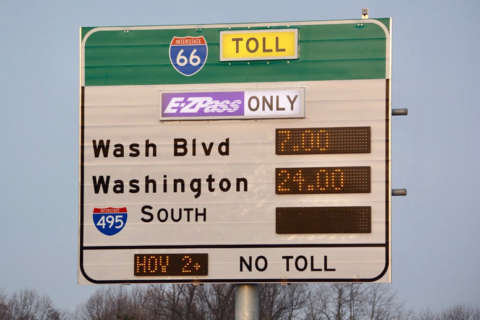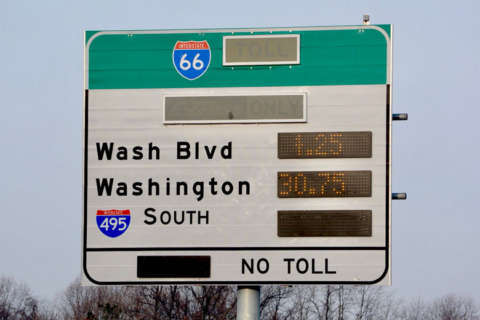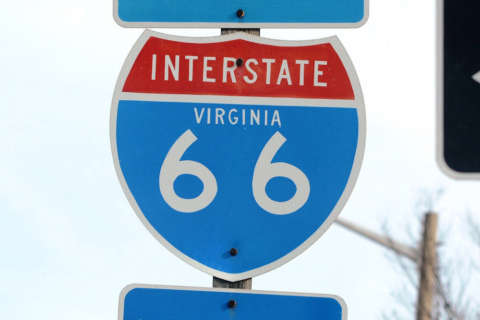WASHINGTON — As tolls for solo drivers on the new Interstate 66 express lanes inside the Capital Beltway spiked to as high as $40 in the first few days of operation, a Republican member of a key Virginia transportation panel said he plans to introduce a measure calling for immediate changes to the tolling.
The resolution, put together by Loudoun County Supervisor Ron Meyer, is set to be introduced Thursday before the Northern Virginia Transportation Commission, which receives the toll revenue.
The measure asks the state to immediately lower and cap I-66 tolls and to return to the previous rush-hour period of 6:30 a.m. to 9 a.m., when High Occupancy Vehicle restrictions were in place.
The new toll system is in place from 5:30 a.m. to 9:30 a.m. and 3 p.m. to 7 p.m.
In the draft resolution, Meyer contends the Virginia Department of Transportation “never told the public or this commission about this extremely high level of tolling before implementation.”
Meyer’s resolution calls for Virginia authorities to “immediately lower, cap, and reconfigure” the I-66 tolls.
“Working Virginians cannot afford tolls more than $35, $20, or even $10 each way every day,” the resolution stated.
Karen Finucan Clarkson, a spokeswoman for the transportation commission, said Meyer’s resolution is not yet on the panel’s official agenda but is expected to be taken up at the commission’s meeting Thursday at 7:30 p.m.
The Washington Post first reported on the draft resolution.
Tolls on the lanes fluctuate with traffic. On Wednesday, they fluctuated from $6.75 to $23.50. The Virginia Department of Transportation’s toll calculator lets drivers see what they’ll pay.
VDOT officials have maintained that proposals, such as capping tolls, would be counterproductive since the toll amounts are determined by an algorithm designed to keep I-66 lanes inside the Beltway free of congestion during the rush-hour periods.
They point to statistics showing that the tolls have achieved that purpose. During Monday morning’s rush-hour, the average speed on the I-66 express lanes was 57 mph, up from 37 mph compared to a year ago.
Before the tolling started Monday, solo drivers were barred from the lanes during rush-hour periods.
At a Commonwealth Transportation Board meeting Wednesday morning, Virginia Secretary of Transportation Aubrey Layne indicated immediate changes to the tolling process would be premature.
“There are some things that could be fine-tuned, but I don’t think we should do anything,” for at least a month or two, Layne said. That will planners in his office enough time to study how drivers are using the lanes and what adjustments they have made, Layne said.
Why did the tolling rates climb so high in the first few days of operation? So far, it appears more people are carpooling, which causes tolling rates for single drivers to climb, Layne said.
“Hooray, that’s what we want,” he said. “We want more people through the corridor. So hooray. Squeezing out the single drivers, that’s what the policy is. The other thing that could make it drive up, is people are willing to pay. They’re just willing to pay more to use that privilege.”
Responding to charges that his office hadn’t anticipated the sky-high tolling rates, Layne said his office had been careful not to make promises about how high the tolls would go. In part, that’s because the tolls are based on hard-to-predict traffic demand. Nevertheless Layne said he has asked his deputy to go back and review previous communication from his office.
“If that has been miscommunicated by someone in VDOT or myself, look, I’m responsible and I’ll take responsibility for it. I don’t think that’s the case, but if it is, so be it.”









